系統設計 System Design
Frontend Infra & Beyond Frontend - (2)
@FE Mentor Program
Agenda
Pure Frontend System Design
Retro
Roadmap For Beyond Frontend
Basic & Generic System Design for FE Engineer
Basic & Generic System Design for FE Engineer
Why should I learn SD as a frontend engineer ? 🧐
Interview





Frontend Engineer
Backend Engineer
DevOps Engineer
Data Engineer
Software Engineer
Cloud Engineer

曾經,我也有一次系統設計的面試經驗...🙈






I think it‘s not just for the interviews. 🎃
🌚 - Ability to work with complex system
🥺 - Junior Developer -> Senior Developer
😀 - Communicate with different roles
🧐 - FE tends to need BE skills today
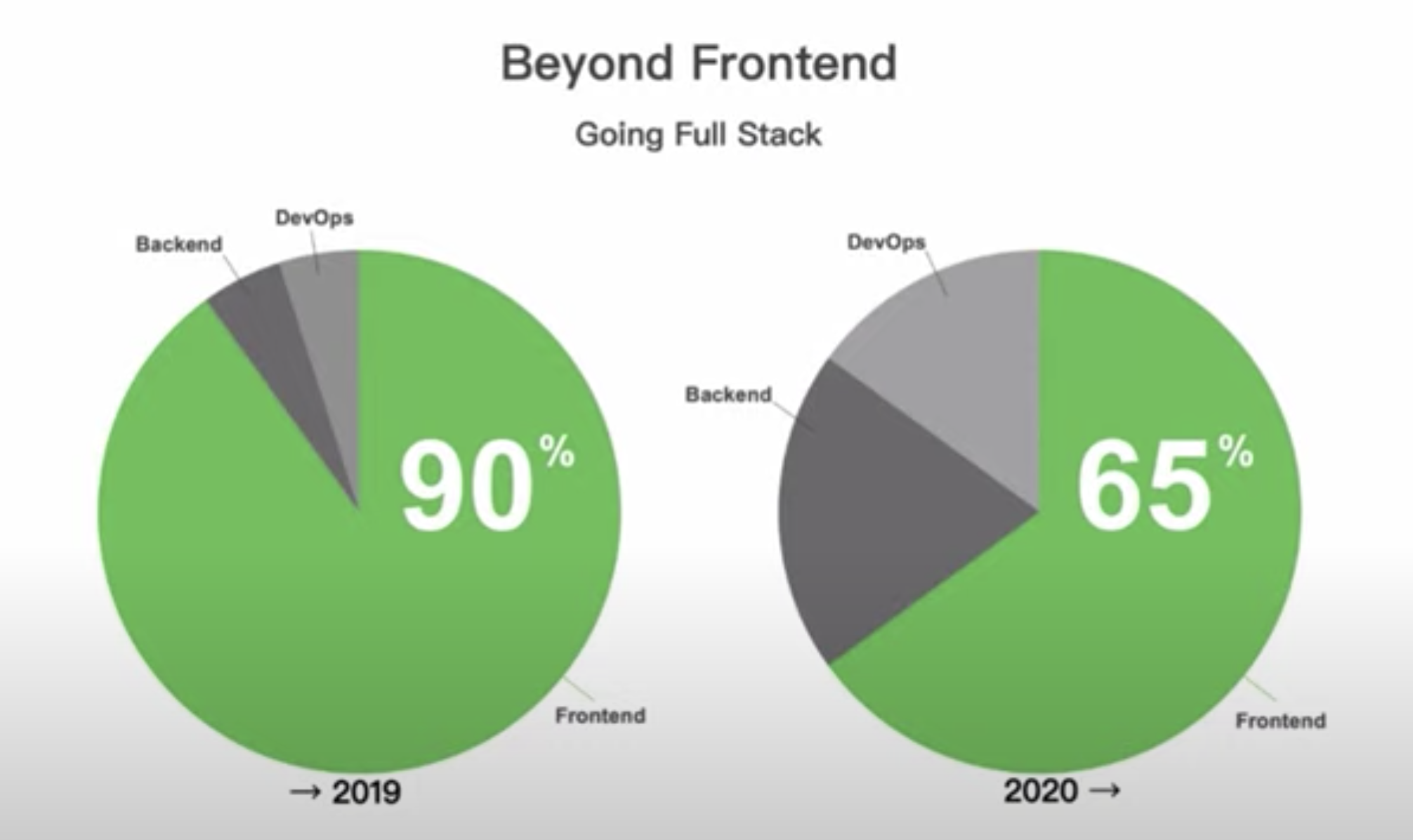
From LINE Developer talk in conference
Distributed System 分散式系統 👌
Assume that...


How about..



And how about..






And if...


???


把剛剛的人想成網路流量,交通工具想成伺服器,我們知道單機的 Vertical Scaling 有局限性,也暴露了 Single Point Of Failure 的風險

分散式系統是一組電腦,透過網路相互連接傳遞訊息與通訊後並協調他們行為而成的系統。
運算
服務分流
儲存
只要是分散式,就要特別注意資料一致性的問題。
分散式系統是一個超級複雜的 Topic,今天只會講到皮毛,有興趣可以參考 MIT 6.824 分散式系統課程
我們希望設計出來的系統擁有哪些特性? 👀
「效能增長程度」與「資源投入」成正比
當系統遇到的流量漸漸變大時,我們會希望系統的伺服器或儲存空間也能夠跟著擴展,避免無法負荷的狀況。
Scalability 可擴展性/可擴縮性

可靠性代表一個系統在它開始執行之後到某個時間點,系統正常執行的機率,也就是系統無故障執行的概率。
Reliability 可靠性


Availability 可用性
可用性是一個容易跟可靠性搞混的指標,它的定義為系統在面對各種異常時可以正確提供服務的能力,更嚴謹的定義為「系統服務不中斷運行時間占實際運行時間的比例。」如果以公式來看:
Availability % = (available time / total time) *100
Availability 可用性
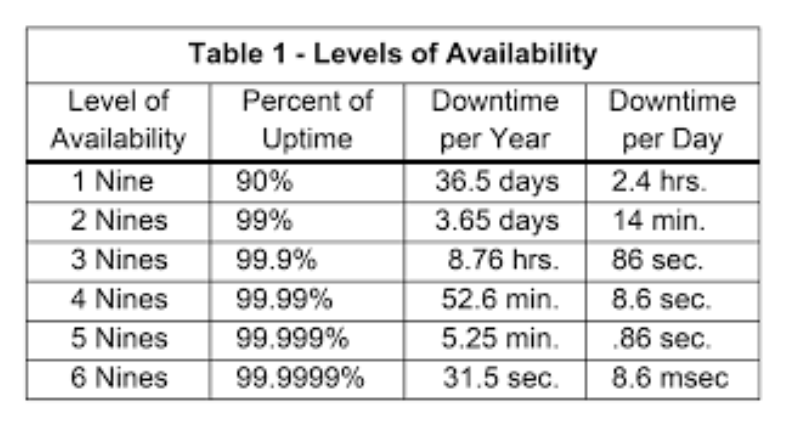
Efficiency 高效率
Latency 延遲:執行一個操作要花費的「時間長度」。
Throughput 吞吐量:以一個時間區間作為單位,單位時間內可以執行「幾次」操作,或運算的「次數」。
High Concurrency
故名思義,代表一個系統是不是方便管理,是不是能快速迭代新功能?是不是能夠快速追蹤 bug?或是能不能把 infrastructure 抽象化,讓應用工程師可以專注在程式邏輯的開發。
Manageability 可管理性

IaC (Infrastructure as Code)
# Cloudformation example
Parameters:
ExistingSecurityGroup:
Description: An existing security group ID (optional).
Default: NONE
Type: String
AllowedValues:
- default
- NONE
Conditions:
CreateNewSecurityGroup: !Equals [!Ref ExistingSecurityGroup, NONE]
Resources:
MyInstance:
Type: "AWS::EC2::Instance"
Properties:
ImageId: "ami-0ff8a91507f77f867"
SecurityGroups: !If [CreateNewSecurityGroup, !Ref NewSecurityGroup, !Ref ExistingSecurityGroup]
NewSecurityGroup:
Type: "AWS::EC2::SecurityGroup"
Condition: CreateNewSecurityGroup
Properties:
GroupDescription: Enable HTTP access via port 80
SecurityGroupIngress:
-
IpProtocol: tcp
FromPort: 80
ToPort: 80
CidrIp: 0.0.0.0/0
Outputs:
SecurityGroupId:
Description: Group ID of the security group used.
Value: !If [CreateNewSecurityGroup, !Ref NewSecurityGroup, !Ref ExistingSecurityGroup]
Key Components in SD 🧠
Cache
Proxy
Replication & Redundant
CDN
Load Balancing
Message Queue
Schema Design
Database (SQL vs NoSQL)
Partition & Sharding
DB Master-Slave
CAP Theorem
😩
Cache
Replication & Redundant
CDN
Load Balancing
Schema Design
Database (SQL vs NoSQL)
Partition & Sharding
CAP Theorem
😊
DB Master-Slave
Message Queue
Proxy
Caching 👻
Cache
Application
DB
1. Cache Hit 直接返回
2. Cache Miss 從 DB 拿資料
3. 把資料寫進 Cache
CDN 🌍

Load Balancing 🧜♀️

Round-Robin
Least Connected
IP-Hash
面對系統設計時的思維走向 🐝
Step 1. 釐清系統需求
🌚 - Non-Functional Requirements
🌞 - Functional Requirements
Step 2. 關於系統流量、容量、網路頻寬等指標的粗略估算
DAU ? Network Traffic ? Storage Capacity ?Memory For Caching ? Read : Write = {} : {} ?.......
Step 3. 定義 System Interface
uploadVideo(user_id, video_content, video_location, user_location, ……)
addVideoToFavorite(user_id, video_id, timestamp, …….)


Step 4. 定義 Data Model | DB Schema
User: UserID, Name, Email, DoB, CreationDate, LastLogin, ….
Video: VideoID,VideoLink, VideoLocation, NumberOfLikes, TimeStamp, …


Step 5. High Level Design

Step 6. System Detailed Design

Step 7. Find Trade Off And Try To Solve It
Never feel that your design is perfect

Let's design a Netflix (or YT) like streaming system 🙈

Step 1. 釐清系統需求
🌞 - Functional Requirements
- Users should be able to upload videos
- Users should be able to share and view videos.
- Users should be able to perform searches based on video titles.
- Our services should be able to record stats of videos, e.g., likes/dislikes, total number of views, etc.
- Users should be able to add and view comments on videos.
Step 1. 釐清系統需求
🌚 - Non-Functional Requirements
- The system should be highly reliable, any video uploaded should not be lost.
- The system should be highly available. Consistency can take a hit (in the interest of availability); if a user doesn’t see a video for a while, it should be fine.
- Users should have a real-time experience while watching videos and should not feel any lag.
Step 2. 關於系統流量、容量、網路頻寬等指標的粗略估算
Total users: 1.5 Billion
DAU: 800 Million
A user view 5 videos per day on average
So, the total video view per second of our system will be...
800M * 5 / 86400 sec => 46K videos/sec
Step 2. 關於系統流量、容量、網路頻寬等指標的粗略估算
upload : view ratio => 1 : 200
46K / 200 => 230 videos/sec
230 videos uploaded per second
What about Storage ?
every minute 500 hours worth of videos are uploaded to our system
One minute of video needs 50MB of storage
Total storage needed for videos uploaded in a minute would be ...
500 hours * 60 min * 50MB => 1500 GB/min (25 GB/sec)
Step 2. 關於系統流量、容量、網路頻寬等指標的粗略估算
What about Bandwidth ?
With 500 hours of video uploads per minute , assuming uploading each minute of the video takes 10MB of the bandwidth, we would be getting 300GB of uploads every minute.
500 hours * 60 mins * 10MB => 300GB/min (5GB/sec)
Assuming an upload:view ratio of 1:200, we would need 1TB/s outgoing bandwidth.
Step 3. 定義 System Interface

Step 4. 定義 Data Model | DB Schema

Step 4. 定義 Data Model | DB Schema
Video metadata storage - MySQL
Videos metadata can be stored in a SQL database. The following information should be stored with each video
- VideoID
- Title
- Description
- Size
- Thumbnail
- Uploader/User
- Total number of likes
- Total number of dislikes
- Total number of views
Step 5. High Level Design
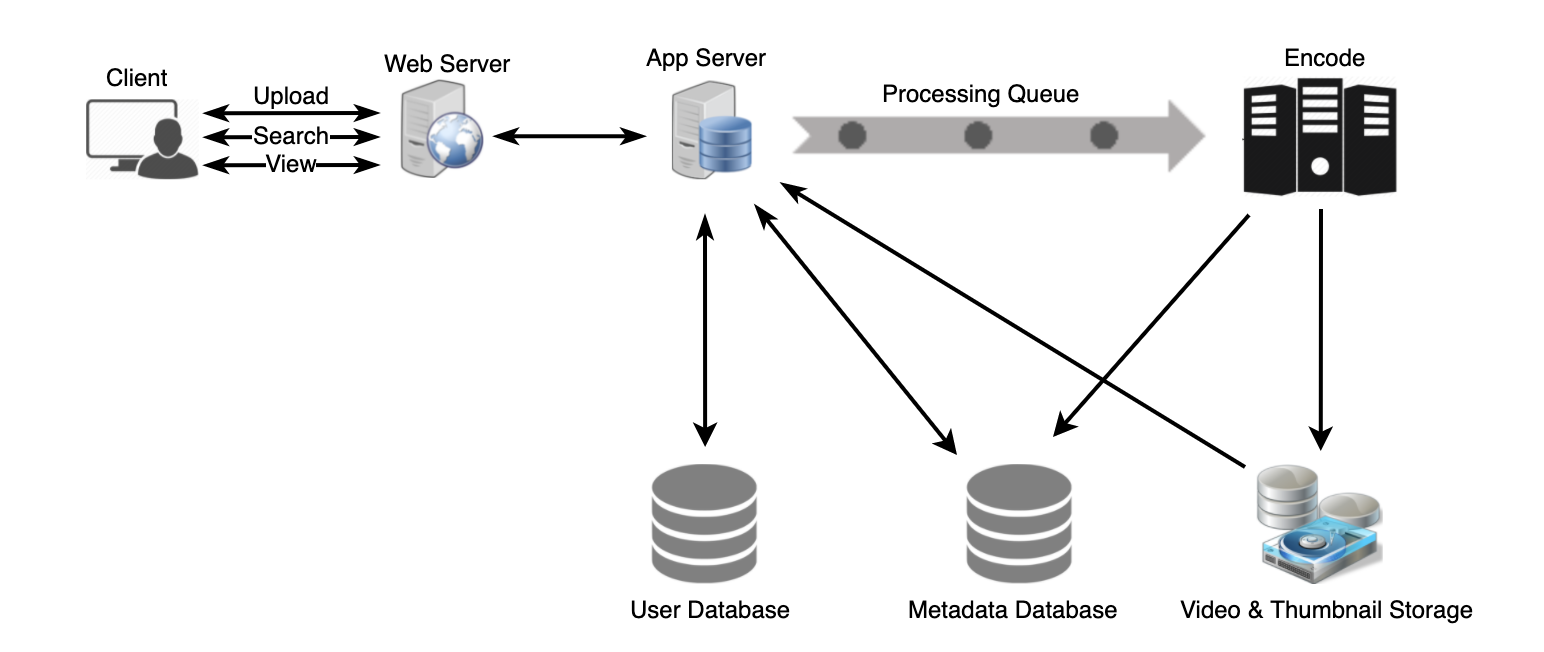
Step 6. System Detailed Design
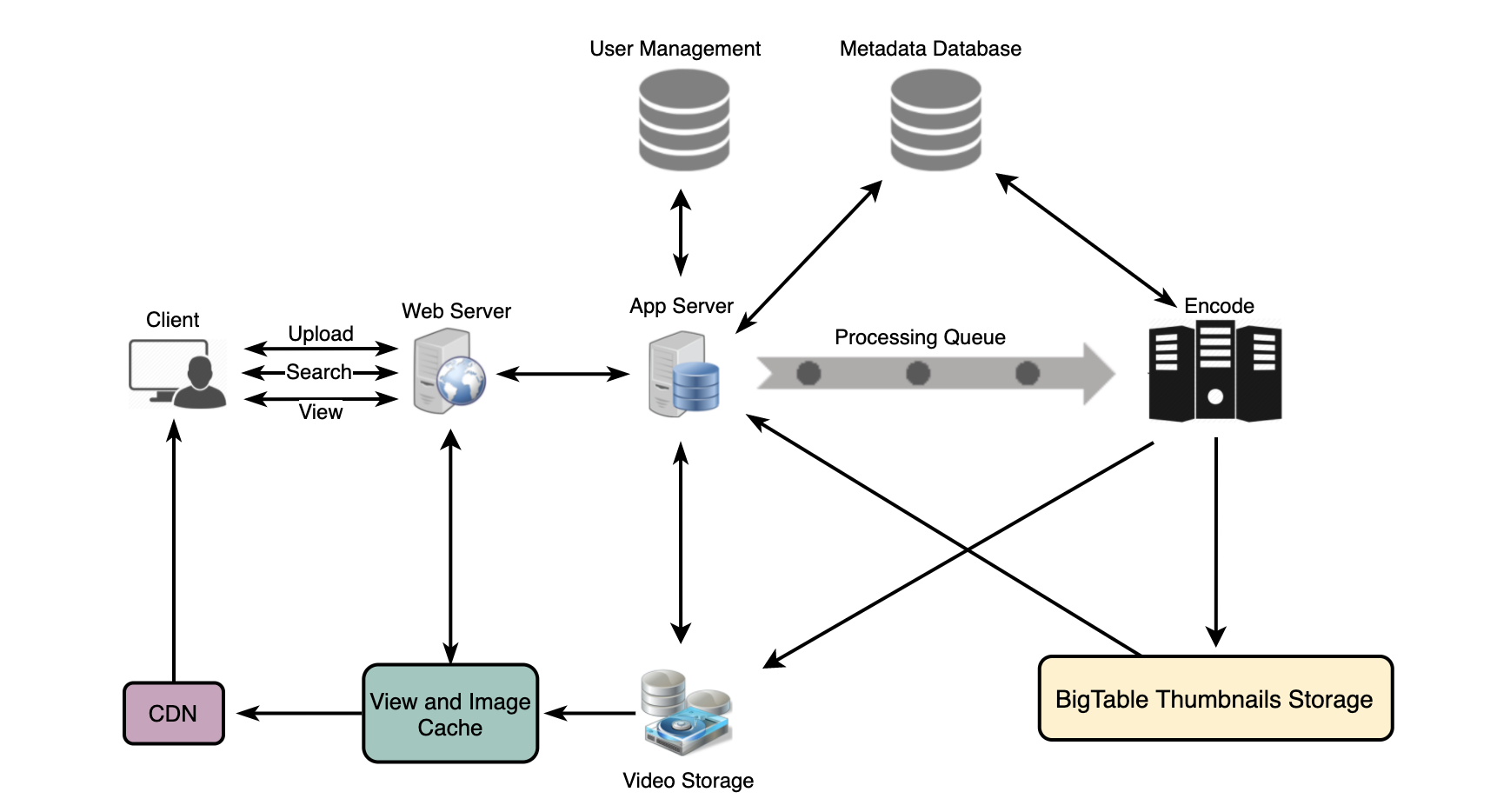
🌚 - Load Balancing
🎃 - Caching
🌍 - CDN
所以...你現在覺得...我當初面試表現的如何? 🙈
近期面試心得 :
Pure Frontend System Design
R.A.D.I.O Framework
- R - Requirements: Laying the Foundation
- A - Architecture and High-Level Design
- D - Data Model: Managing Client-Only Data
- I - Interface Definition and API Design: Making Informed Choices
- O - Optimizations and Deep Dive
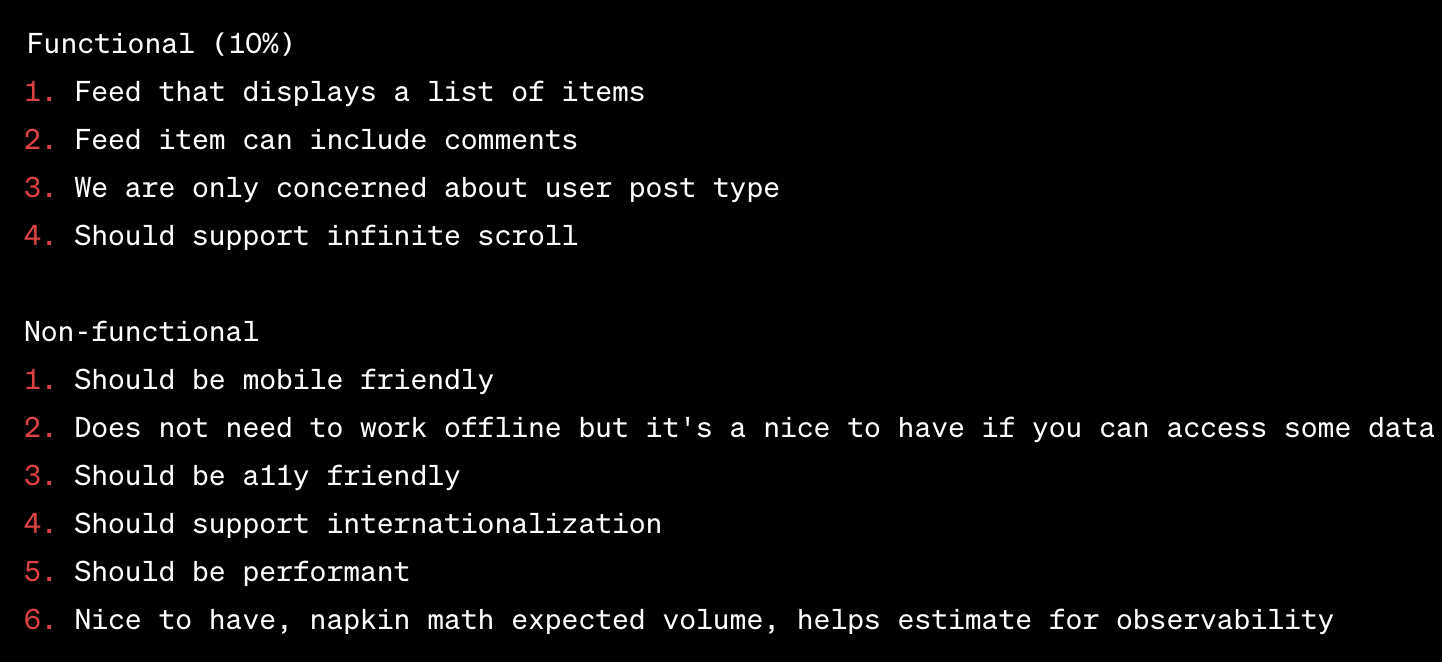
Requirements
Architecture/High-Level Design
- Identifying the key components of the product,
- How the components interact with each other
- How they are related
- Diagrams are your friends here

Architecture/High-Level Design


Data Model
Describe the various data entities, the fields they contain and which component(s) they belong to
Server Originated Data (Server State)
Client Only Data (Client State)
- Data to be persisted
- Ephemeral Data
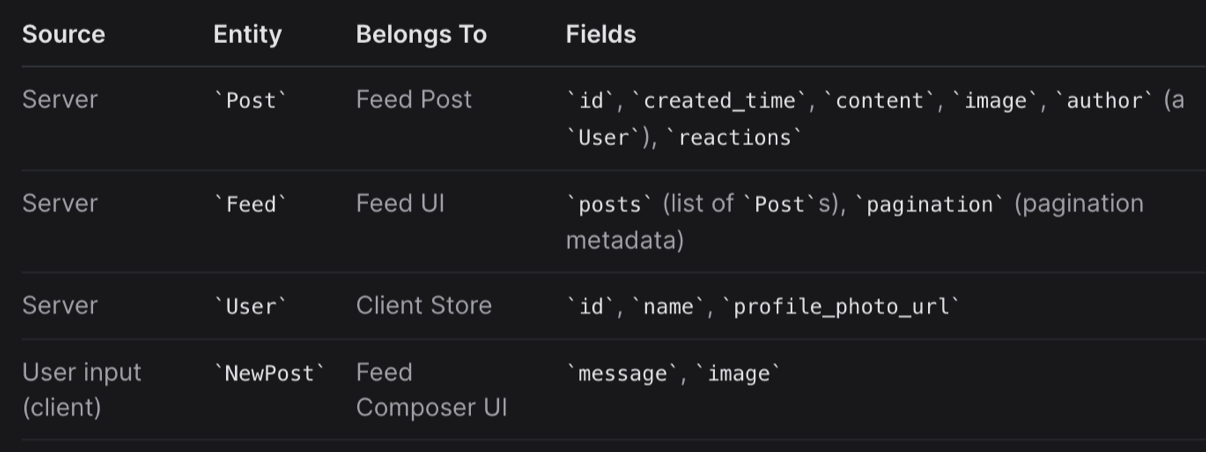
enum FeedItemType {
// Populate with the actual types, e.g.:
Article,
Video,
Image,
// etc...
}
interface User {
name: string;
// ... other properties
}
interface UserSettings {
timeZone: string;
accessibilityPreferences: AccessibilityPreferences;
// ... other properties
}
interface AccessibilityPreferences {
// Define specific accessibility preferences
}
interface StyledText {
// Define properties for styled text
}
interface Media {
// Define properties for media content
}
interface FeedItemContent {
title: StyledText;
body: StyledText;
media: Media;
// ... other properties
}
interface FeedItemComments {
// Define properties for feed item comments
}
interface FeedItem {
type: FeedItemType;
creationDate: string;
author: User;
content: FeedItemContent;
comments: FeedItemComments[];
}
interface Feed {
items: FeedItem[];
page: number;
size: number;
}
interface App {
user: User;
settings: UserSettings;
feed: Feed;
}Interface Definition (API)
Objective: Define the interface between components in the product, functionality of the various APIs, their parameters and responses.

API for UI Component System Design ?
Optimization & Deep Dive

Metrics
🤔
Assets Optimization
Rendering
Build
Cache
Networking
Web Workers & WASM
Memory Management
Optimization & Deep Dive
Objective: Discuss about possible optimization opportunities and specific areas of interest when building the product.
(If in interview, take about 40% of time)
- Focus on the important part of the product
- Focus on your strengths
General Optimization & Deep Dive Areas
- Performance
- User Experience
- Network
- Accessibility (a11y)
- Multilingual Support
- Multi-device Support
- Security
- Architecture
Example: Micro Frontend 的共同議題
- 網頁效能
- 設計系統
- 知識共享 (ex: logging system, package)
Summary For FE System Design
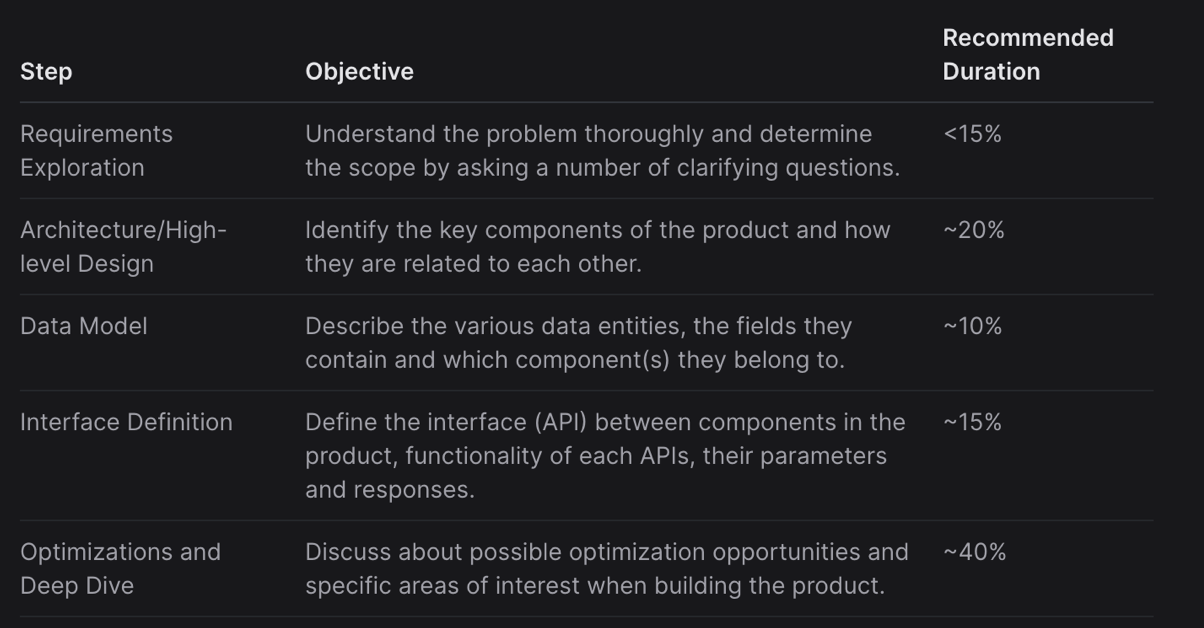
Roadmap For Beyond Frontend
(Frontend Focused Software Engineer)
需要補足的面向
Advanced Frontend
- 瀏覽器運作機制&架構
- 效能優化
- 前端框架底層原理
- 開源套件 Source Code
- 測試 (Reference)
- 變化特別快,盡量跟上新技術
Backend
- API Development
- SQL, Database Architecture (Ref1, Ref2) & Management
- Serverless & Cloud
- 效能優化 (LB, query optimization, cache, DS & Algo...etc)
- Networking
- Distributed System
- Consistency (ACID, Transaction)
DevOps
- Docker
- Kubernetes (CKAD vs CKA)
- Server & Resource Management
- CI / CD
- Observability & Monitoring
- Artifact Management
Software Architecture
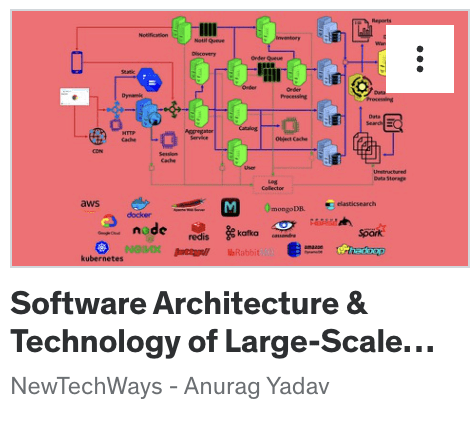

Retro
回家作業